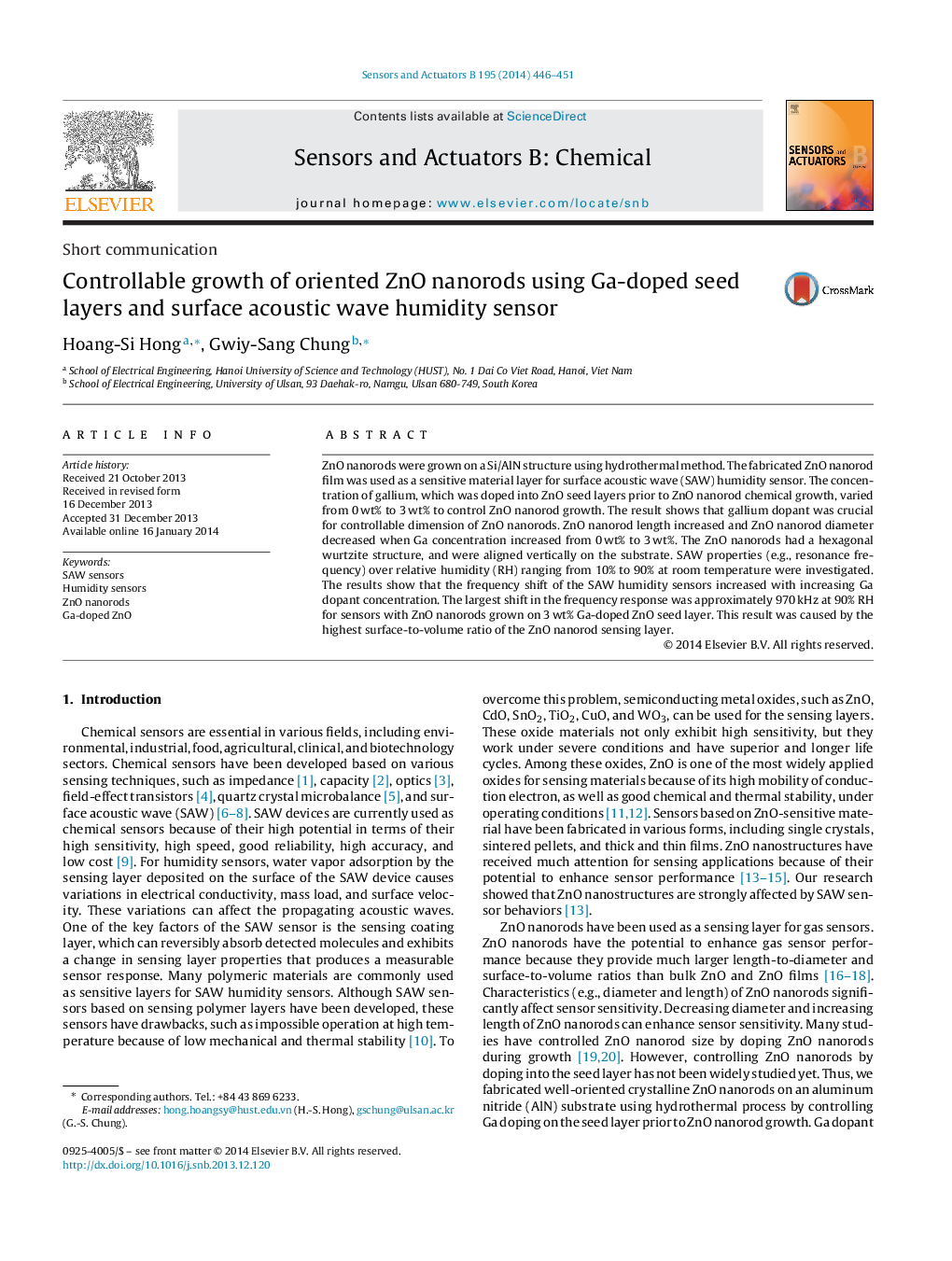| Article ID | Journal | Published Year | Pages | File Type |
|---|---|---|---|---|
| 7147120 | Sensors and Actuators B: Chemical | 2014 | 6 Pages |
Abstract
ZnO nanorods were grown on a Si/AlN structure using hydrothermal method. The fabricated ZnO nanorod film was used as a sensitive material layer for surface acoustic wave (SAW) humidity sensor. The concentration of gallium, which was doped into ZnO seed layers prior to ZnO nanorod chemical growth, varied from 0Â wt% to 3Â wt% to control ZnO nanorod growth. The result shows that gallium dopant was crucial for controllable dimension of ZnO nanorods. ZnO nanorod length increased and ZnO nanorod diameter decreased when Ga concentration increased from 0Â wt% to 3Â wt%. The ZnO nanorods had a hexagonal wurtzite structure, and were aligned vertically on the substrate. SAW properties (e.g., resonance frequency) over relative humidity (RH) ranging from 10% to 90% at room temperature were investigated. The results show that the frequency shift of the SAW humidity sensors increased with increasing Ga dopant concentration. The largest shift in the frequency response was approximately 970Â kHz at 90% RH for sensors with ZnO nanorods grown on 3Â wt% Ga-doped ZnO seed layer. This result was caused by the highest surface-to-volume ratio of the ZnO nanorod sensing layer.
Related Topics
Physical Sciences and Engineering
Chemistry
Analytical Chemistry
Authors
Hoang-Si Hong, Gwiy-Sang Chung,
